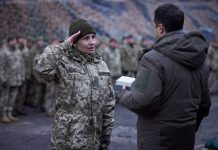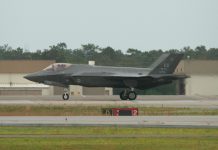In the face of growing regional geopolitical volatility, internal structural weaknesses and in parallel to its burgeoning desire to enhance its global reach through soft power initiatives, Qatar has set itself on a program of military modernisation and rearmament. This strategy of modernisation has led the state to seek a certain rapprochement with Germany in terms of military procurement. This desire for ‘Deutsche Qualität’ has both its advantages and disadvantages…
Today, Qatar is dealing with a number of internal and external issues as its attempts to cement its place as a key player in both the regional and international geopolitical theatres. Modernising and rearming its military is a key component of this process. According to a report by the Stockholm International Peace Research Institute (SIPRI), “Qatar’s arms imports increased by 311 per cent between 2013–17 and 2018–22, making it the world’s third biggest arms importer in 2018–22.”
In 2022, the country purchased a multitude of aircraft, air defence systems, armoured vehicles, missiles, naval weapons, sensors and ships. “In terms of [armaments] deliveries, Qatar has gone from a minor arms importer before 2014 to a significant one in the years since, based on a series of major contracts signed over the past two years. It is expected that its arms imports will be even higher in the coming years,” said Pieter Wezeman, Senior Researcher at SIPRI. The country sources its military hardware from a number of Western countries, notably France, Britain, Turkey, the United States and Germany.
Varied suppliers for air and sea procurement
Qatar has generally had a varied supply chain when supplying its navy and air force. According to SIPRI, in the period 2018-2022, 42% of the imports came from the U.S., making them the main suppliers to the country, followed by France at 29% and Italy at 14%. These imports included 36 combat aircrafts from France, 36 from the United States, 8 from the United Kingdom, as well as 3 frigates from Italy.
The latter, a $5.9 billion dollar deal with the Italian ship maker Fincantieri, involves the purchase of a Landing Platform Dock (LPD) amphibious vessel in particular, dubbed “Al Fulk,” which provides Qatar with unique maritime capabilities. The Qatari navy has also signed a new contract with Italy’s Leonardo to develop a Naval Operation Center (NOC) for the military service. This is the first system of its kind in the country.
“This agreement is very important for us,” said Qatari Emiri Navy Chief Maj. Gen. Abdullah Hassan Al-Sulaiti. “The resulting maritime command and control center will be linked with the ships in the theater of operations. It is like the Navy’s eye in the sea.”
In the air, Qatar has managed to acquire 72 Boeing F-15e Eagles from the United States (36 plus the option of a further 36), in a deal worth up to $4 billion. Qatar also received its first Eurofighter Typhoon prior to the World Cup as part of a 2017 deal with BAE systems worth up to £5 billion.
“Deutsche Qualität”?
Qatar’s approach to sea and air procurement is reflected in its strategy to obtain state-of-the-art weapons systems for its Land Army. The country’s desire for strategic autonomy has meant reinforcing partnerships with its Western allies, from whom Qatar has been able to import armaments to further its military modernisation programme. The Land Army has in recent years been somewhat lagging behind in this process, and Qatar’s choice of Germany as a key partner has perhaps posed some issues in terms of hardware reliability.
Qatar’s strategy for acquiring modern combat vehicles certainly suggests a taste for a certain “Deutsche Qualität”, or the intrinsic industrial quality of German-made components. The Land Army is today equipped with some of the most modern German-made combat vehicles. These include the Leopard 2A7+ main battle tank, of which it received 62 in 2016 following the signing of a contract with Krauss-Maffei Wegmann (KMW) in 2013. It also received 24 PzH 2000 tracked 155 self-propelled howitzers as part of the same deal. In addition, Qatar also acquired 14 Dingo 2 HD 4×4 armoured vehicles and 32 Fennek a 4×4 light reconnaissance armoured vehicles.
On paper, these acquisitions have vastly improved the combat effectiveness of the Land Army and have helped accelerate the Qatari push for military modernisation. Dig a little deeper, however, and issues immediately arise. The Leopard 2 tank, for example, was lauded as one of the world’s most powerful main battle tanks, but its performance with the Turkish military during operation ‘Euphrates Shield’ (ES) in August 2016 against ISIS in Syria did serious harm to the tank’s reputation as a robust, modern fighting vehicle. The tanks were unable to stand the adversary firepower with multiple Leopard tanks damaged in the counter fire at al-Bab, and it is reported that 11 tanks were severely damaged. ISIS even claimed to have destroyed 10.
Furthermore, it was reported that the PzH 2000, in spite of its immense firepower, accuracy and agility, was proving unreliable in Ukraine, often breaking down and in urgent need of repairs, mainly due to its over sophistication confronted to the harsh conditions of high intensity warfare. This was first reported by Der Spiegel in June 2022, just a few months into the conflict, and Kyiv highlighted the howitzer’s inability to adapt to alternative ammunition, which often caused heavy wear and tear, severely limiting its combat effectiveness, which was made worse by a shortage of spare parts.
The dubious operational experience of these German fighting vehicles in modern theatres and related technical issues are further aggravated by associated delays and costs in development. Just recently, the Bundeswehr has experienced serious technical issues with its PUMA infantry fighting vehicle during training exercises in December 2022. The German press subsequently dubbed the vehicle the “Pannenpanzer,” or breakdown tank. In January 2023, the German MoD announced that these tanks had been repaired, but gave no date for their deployment.
Germany: a complicated partner
Technical issues with its military hardware aside, Germany has a reputation for being a complicated ally, and not only when it comes to military procurement. It is true to say that German regional and international geopolitical strategy has been turned upside down by the Russian invasion of Ukraine, but even in that context, the German government proved reluctant to “send weapons of war into a conflict zone.” This highlights Germany’s understanding that its military export programmes could cause serious harm to its image internationally and with its EU partners depending on the context of the conflicts in which its arms are deployed. This is why Germany often appears to be sitting on the fence, hedging its bets before making key decisions regarding different possible outcomes, the third-party role it plays and the possible detrimental effect its involvement may have on its relationships with key partners.
For example, Germany banned all arms exports to Saudi Arabia and the UAE between 2018 and 2022 due to its diplomatic assessment of the war in Yemen, concretely refusing the equipment it supplies to be used in a conflict in which one of its clients is implicated. This position can quickly become a handicap for the clients, and decision-makers such as the Qatari Minister of Defence, Dr Khalid bin Mohamed Al Attiyah or the Chief of Staff of the Armed Forces, General Salim Bin Hamad Al-Nabit will surely be more attentive to this issue in future procurement strategies.
Qatar, for its part, is growing anxious to reinforce its military capabilities in the face of an aggressive Iran, its position as a mediator between Iran and Saudi Arabia, and its geopolitical fragility. This is why it has reinforced its interoperability capabilities and strengthened partnerships with key western partners. According to Anthony Cordesman, the Arleigh A. Burke Chair in Strategy at the Centre for Strategic and International Studies, “Qatar’s position remains precarious because its strategy depends on the careful balancing of many competing forces – religious extremism, the West, the GCC, Iran, and its population. Qatar’s future trajectory is a function of how well it manages to chart its course without allowing any of these forces to get in the way. How well Qatar can maintain these contradictions without any of them getting beyond control, however, remains an outstanding uncertainty.” Any rapprochement with Germany must be carefully considered in this context…







